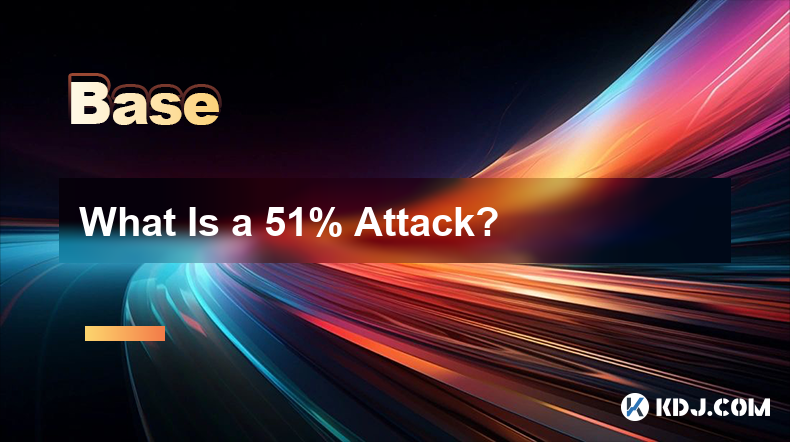-
 Bitcoin
Bitcoin $120400
1.77% -
 Ethereum
Ethereum $3615
7.90% -
 XRP
XRP $3.580
17.84% -
 Tether USDt
Tether USDt $1.001
0.06% -
 BNB
BNB $729.4
1.25% -
 Solana
Solana $179.9
5.04% -
 USDC
USDC $0.0000
0.01% -
 Dogecoin
Dogecoin $0.2311
8.22% -
 TRON
TRON $0.3226
4.04% -
 Cardano
Cardano $0.8490
12.85% -
 Hyperliquid
Hyperliquid $46.45
0.72% -
 Stellar
Stellar $0.4913
8.54% -
 Sui
Sui $4.027
2.00% -
 Chainlink
Chainlink $18.51
11.67% -
 Hedera
Hedera $0.2818
21.51% -
 Avalanche
Avalanche $24.03
7.40% -
 Bitcoin Cash
Bitcoin Cash $508.5
2.90% -
 Shiba Inu
Shiba Inu $0.00001496
3.24% -
 UNUS SED LEO
UNUS SED LEO $8.961
1.83% -
 Toncoin
Toncoin $3.264
3.13% -
 Litecoin
Litecoin $104.6
8.15% -
 Polkadot
Polkadot $4.389
6.11% -
 Uniswap
Uniswap $9.924
10.63% -
 Monero
Monero $337.9
0.49% -
 Pepe
Pepe $0.00001376
2.79% -
 Bitget Token
Bitget Token $4.830
2.46% -
 Ethena USDe
Ethena USDe $1.001
0.05% -
 Dai
Dai $1.000
0.02% -
 Aave
Aave $325.2
1.66% -
 Bittensor
Bittensor $423.7
-0.85%
What Is a 51% Attack?
Governments and large corporations possess the resources to execute 51% attacks, potentially jeopardizing the security and integrity of proof-of-work blockchains.
Dec 16, 2024 at 04:08 pm

Key Points:
- A 51% attack involves one entity controlling over half of the network's hash rate.
- Such an attack allows the malicious actor to manipulate transactions and block creation.
- Most popular proof-of-work blockchains have security measures to deter 51% attacks.
- Governments and large organizations have the resources to potentially execute 51% attacks.
- Decentralized exchanges (DEX) and stablecoins are particularly vulnerable to such attacks.
What is a 51% Attack?
A 51% attack occurs when a single entity gains control over more than half of a blockchain network's computational power (hash rate). This allows them to manipulate the blockchain's consensus mechanism, effectively granting them control over transaction processing and block creation.
How Does a 51% Attack Work?
- Control the Hash Rate: The attacker acquires a majority of the mining power dedicated to a specific blockchain.
- Manipulate Transactions: The attacker can prevent new transactions from being included in the blockchain or reverse recent transactions.
- Double-Spending: The attacker can potentially double-spend coins by broadcasting a transaction to the network and then using their majority hash rate to create a conflicting block that excludes the original transaction.
- Block Production: The attacker can decide which transactions are included in new blocks and which ones are rejected.
Vulnerability and Deterrence
Proof-of-work (PoW) blockchains like Bitcoin and Ethereum are vulnerable to 51% attacks. However, they have security measures in place to deter such attacks.
- Network Difficulty: The difficulty of mining new blocks adjusts based on the hash rate, making it more expensive to accumulate sufficient power for an attack.
- Block Rewards: Networks offer rewards to miners who successfully mine new blocks, incentivizing participants to maintain the network's security.
- Decentralization: Widely distributed mining pools reduce the likelihood of any single entity acquiring 51% of the hash rate.
Consequences of a 51% Attack
- Loss of Trust: Users may lose confidence in a blockchain that has experienced a 51% attack.
- Financial Loss: Victims of double-spending can suffer severe financial losses.
- Legal and Regulatory Action: Governments may consider taking action against entities responsible for 51% attacks.
Who Could Execute a 51% Attack?
- Governments: Governments with access to advanced computing resources could potentially execute such attacks.
- Large Corporations: Mining pools and other organizations with significant financial resources could also attempt 51% attacks.
DEX and Stablecoin Vulnerability
Decentralized exchanges (DEXs) and stablecoins that rely on oracles or PoS mechanisms may be particularly vulnerable to 51% attacks. An attacker could manipulate prices or halt trading activities on DEXs by controlling the network's nodes or validators.
FAQs
Is it possible to recover from a 51% attack?
Yes, it is possible to recover from a 51% attack by implementing protocol upgrades or reorganizing the blockchain. However, it requires a significant effort from network participants and developers.
Can proof-of-stake consensus mechanisms prevent 51% attacks?
Proof-of-stake (PoS) mechanisms generally offer greater resistance to 51% attacks compared to PoW. However, PoS networks may still be vulnerable to attacks if the majority of tokens are concentrated in the hands of a few validators.
How can I protect myself from 51% attacks?
- Diversify your cryptocurrency portfolio across different blockchains to reduce risk.
- Avoid investing heavily in DEXs or stablecoins that may be vulnerable to 51% attacks.
- Stay informed about potential attacks and any network upgrades or defensive measures.
Disclaimer:info@kdj.com
The information provided is not trading advice. kdj.com does not assume any responsibility for any investments made based on the information provided in this article. Cryptocurrencies are highly volatile and it is highly recommended that you invest with caution after thorough research!
If you believe that the content used on this website infringes your copyright, please contact us immediately (info@kdj.com) and we will delete it promptly.
- Bitcoin, Cloud Mining, Crypto Wealth: Riding the Bull Run in Style
- 2025-07-18 12:30:12
- Ethereum Gas Fees, ERA Airdrop: A New Yorker's Take on Crypto Chaos
- 2025-07-18 12:50:12
- Bitcoin, Altcoins, and the Crypto Market: Navigating Trump's Crypto Ventures and the Evolving Digital Landscape
- 2025-07-18 12:50:12
- Bitcoin Holdings and the Smarter Web: A Match Made in Digital Heaven?
- 2025-07-18 12:10:12
- Bitcoin, MSTR & Saylor's Strategy: A Winning Trifecta?
- 2025-07-18 08:30:13
- Bitcoin Mortgages Down Under: A New Wave in Australian Homeownership?
- 2025-07-18 08:50:12
Related knowledge

What is the Bitcoin dominance index
Jul 12,2025 at 10:35pm
Understanding the Bitcoin Dominance IndexThe Bitcoin Dominance Index, often abbreviated as BTC.D, is a metric used to measure Bitcoin's market capital...

What is the Bitcoin dominance index
Jul 11,2025 at 04:29am
What is the Bitcoin Dominance Index?The Bitcoin Dominance Index is a metric used to gauge Bitcoin's market capitalization relative to the total market...

What is the correlation between Bitcoin and the stock market
Jul 18,2025 at 04:56am
Understanding the Correlation Between Bitcoin and the Stock MarketThe correlation between Bitcoin and the stock market has become a topic of increasin...

Can crypto be a hedge against inflation
Jul 14,2025 at 12:21am
Understanding the Concept of Hedging Against InflationInflation refers to the general increase in prices and fall in the purchasing value of money ove...

Can crypto be a hedge against inflation
Jul 12,2025 at 12:07pm
Understanding the Role of Blockchain in Decentralized Finance (DeFi)Blockchain technology serves as the backbone of decentralized finance, offering a ...

What are account abstraction wallets
Jul 13,2025 at 01:43am
Understanding the Concept of Account AbstractionAccount abstraction is a term frequently used in the Ethereum ecosystem, particularly within discussio...

What is the Bitcoin dominance index
Jul 12,2025 at 10:35pm
Understanding the Bitcoin Dominance IndexThe Bitcoin Dominance Index, often abbreviated as BTC.D, is a metric used to measure Bitcoin's market capital...

What is the Bitcoin dominance index
Jul 11,2025 at 04:29am
What is the Bitcoin Dominance Index?The Bitcoin Dominance Index is a metric used to gauge Bitcoin's market capitalization relative to the total market...

What is the correlation between Bitcoin and the stock market
Jul 18,2025 at 04:56am
Understanding the Correlation Between Bitcoin and the Stock MarketThe correlation between Bitcoin and the stock market has become a topic of increasin...

Can crypto be a hedge against inflation
Jul 14,2025 at 12:21am
Understanding the Concept of Hedging Against InflationInflation refers to the general increase in prices and fall in the purchasing value of money ove...

Can crypto be a hedge against inflation
Jul 12,2025 at 12:07pm
Understanding the Role of Blockchain in Decentralized Finance (DeFi)Blockchain technology serves as the backbone of decentralized finance, offering a ...

What are account abstraction wallets
Jul 13,2025 at 01:43am
Understanding the Concept of Account AbstractionAccount abstraction is a term frequently used in the Ethereum ecosystem, particularly within discussio...
See all articles

























































































